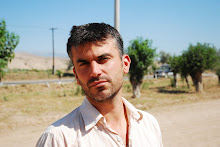After a year living, working, travelling and enjoying life here in Tajikistan I was once again reminded how fragile life is within the country.
We rose early on Saturday to set the paper trail for the hash and at four o’clock a ramshackle crowd converged to walk and run through the neighbouring hills of Dushanbe. The trail weaved through eroding pasture lands, dirt tracks, half completed mud houses and steep climbs to spectacular views of the snow capped mountain ranges. Hot, sweaty and rather smelly the hashers clambered back in their stuffy vehicles heading for cool beers and Indian grub. However, on this occasion the conditions of the trail triggered a heart attack in a visitor to Dushanbe. Slumped in the back of a range rover, the person in question was struggling for breath and gasping for air. After a flurry of phone calls they were rushed to the newly built, and recently kitted out, Iranian hospital several miles away where they were put on a life support system. Thankfully, several days later they were ‘medvac’ to London. We are all crossing our fingers for a full recovery.
Later in the week, we conducted a monitoring exercise of a Natural Disaster seminar. The seminar is designed to raise awareness of the causes of Natural Disasters, discuss measures to reduce the impact of a disaster and plan what actions to take in the event of a disaster. As the seminar finished a little early we took the opportunity to visit Kulyab. Kulyab, is a small city in the Khatlon Oblast of Tajikistan, and in the previous week after heavy rains, the river burst its banks and overflowed at a low level bridge. The result was catastrophic.
‘Forty people were killed, 33 remain missing and at least 85 were severely injured by the floods. About 4,500 children, women and men in Kulyab are displaced since their houses were destroyed or severely damaged by torrents of water, stones and debris. Another 16,000 people in rural areas lost their livelihoods; their livestock were killed, crops were destroyed and pastures were buried under mud and rocks’ REACT Flood Appeal for East Khatlon 19.05.2010
We reached the bridge were the flood originated; the devastation was widespread. We walked where there once were houses, gardens, roads, paths and businesses. Two excavators were clearing the remains of former homes, and clearing the debris from river channel. Water stained walls higher than I could reach, and a layer of mud had drowned all the vegetation. Three women picked through the rubble looking for salvageable belongings, whilst a neighbour asked them whether they had eaten. A temporary camp was established in the football stadium for those with nothing left. The devastation stretched along the river bank, cars were smashed, and live electric cables hung down like tentacles.
The Government of Tajikistan has launched an appeal for ‘US$5.3 million to provide relief and recovery assistance’.
The houses may be rebuilt and the channel strengthened but the trauma of the event will never disappear. Many of those missing are reported to be children who were washed away by the torrent of muddy water.
Overwhelmed by the situation we left a group of men to grieve for their love ones. The lady in the hotel explained how her sister had lost everything and was staying in her home. As we departed the next day to check upon another natural disaster workshop we were left to contemplate whether a workshop here, in this community, would have saved lives, any lives, just one.
I fly home this evening grateful for what I have, the opportunity to have, and what we all give to each other to strengthen the fragility around.




